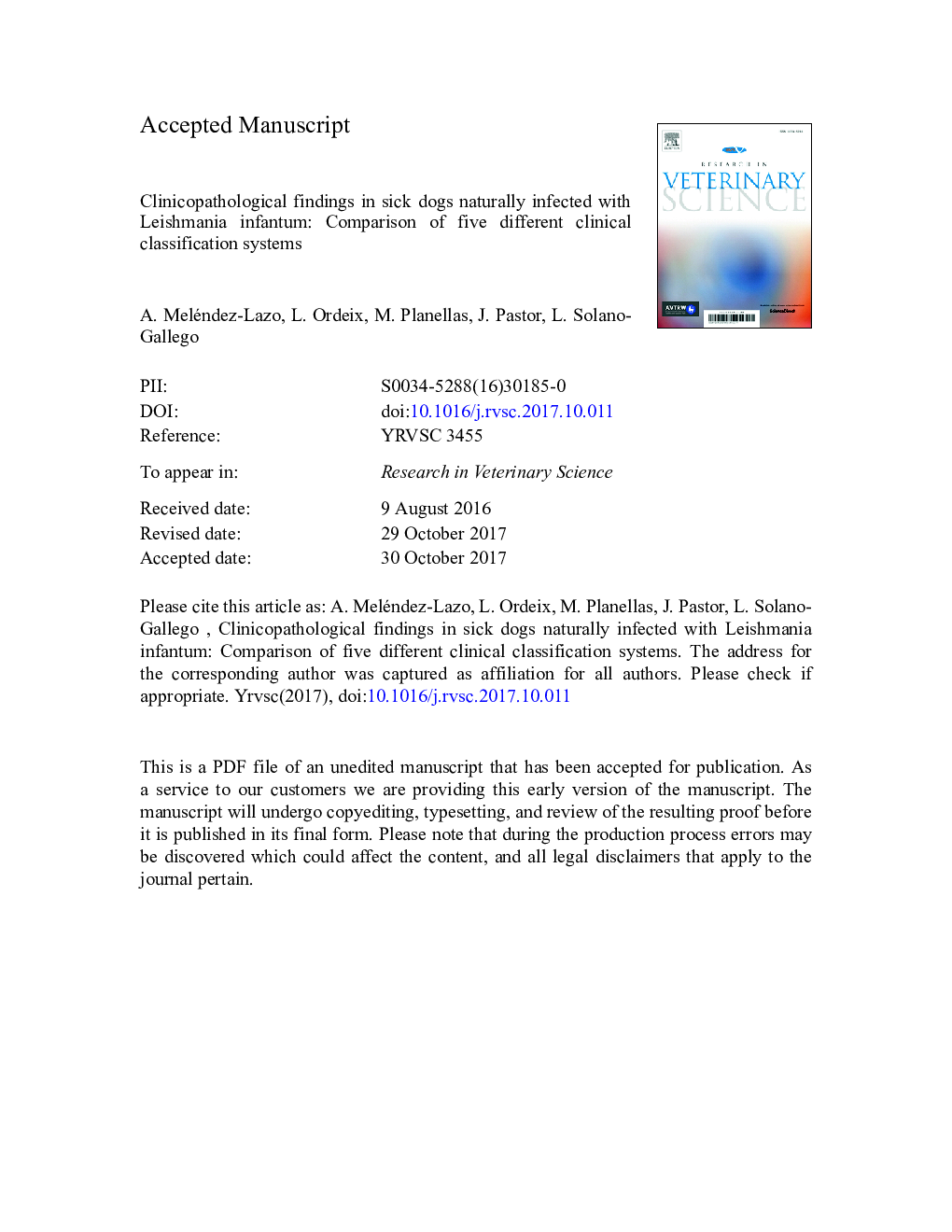| Article ID | Journal | Published Year | Pages | File Type |
|---|---|---|---|---|
| 8504019 | Research in Veterinary Science | 2018 | 35 Pages |
Abstract
A wide spectrum of clinical and clinicopathological findings in dogs with canine leishmaniosis (CanL) due to Leishmania infantum exists. However, the majority of clinical descriptions have been published a long time ago and recent studies in Europe are almost lacking. In addition, clinical classification of sick dogs is not well-standardized, with different classification systems used by clinical and epidemiological studies, making comparison of studies a difficult task. The aims of the study were to describe the clinicopathological findings of dogs naturally infected with L. infantum at the time of diagnosis and to review and compare the various clinical classification systems for CanL available in the literature. Eighty-one healthy dogs and fifty-one dogs with CanL were studied and clinical and clinicopathological data were recorded. The most common clinical findings at diagnosis were skin lesions (78.4%), lymphadenomegaly (64.7%) and weight loss (47.1%). The most frequent clinicopathological abnormalities included mild to moderate non-regenerative anemia (62.7%), lymphopenia (25.5%), hyperproteinemia (52.9%) dysproteinemia (78.4%). and proteinuria (47.8%). Renal azotemia was rare (5.9%). Only 5.9% of the patients studied were classified in similar categories (mild, moderate and severe disease) when five clinical classifications systems were compared, while 11.8% of cases were classified in similar categories when only two clinical classification systems were considered based on the fact that they included therapeutic and prognosis recommendations. In conclusion, anemia and protein-related alterations are common in dogs with CanL. In contrast, renal azotemia is infrequent despite the high percentage of diseased dogs with proteinuria, indicating kidney involvement. Adequate clinical staging system is desirable in order to establish proper management, treatment and prognosis in dogs with CanL and to facilitate the comparison of clinical and epidemiological studies.
Keywords
Related Topics
Life Sciences
Agricultural and Biological Sciences
Animal Science and Zoology
Authors
A. Meléndez-Lazo, L. Ordeix, M. Planellas, J. Pastor, L. Solano-Gallego,
